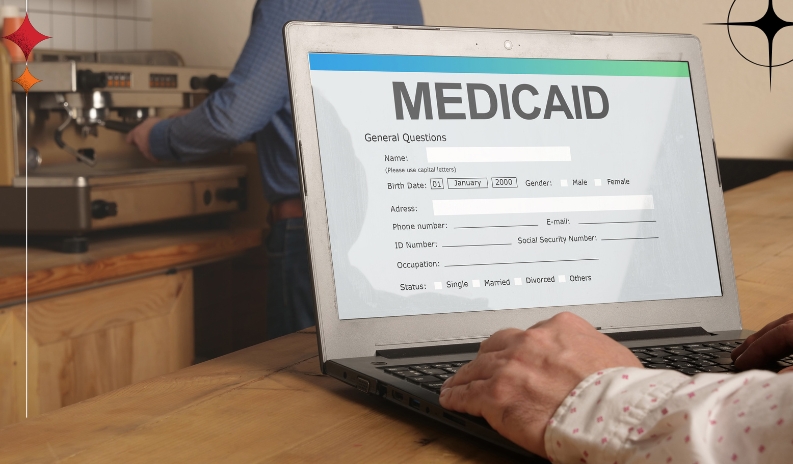Want to Save Your Home From Medicaid Foreclosure? You Need Medicaid Asset Protection Trust
by Mashum Mollah Finance 30 October 2024

Medicaid Asset Protection Trust is a popular means of protecting your assets and masquerading yourself to fit the Medicaid requirement bill. In other words, this can truly help you take benefits and keep your commercial assets safe.
Then again, what is Medicaid? How secure is it? Will It help you save your house? All of these questions will get an answer. Therefore, follow along.
Introduction To Asset Protection Trust & Their Working
Medicaid Asset Protection Trust is one of the most prominent forms of asset protection trusts out there. Then again, what is an Asset Protection Trust? Before you can start answering any other question, you need to answer this.
Before we start delving into the world of Medicaid Asset Protection, we need to understand its fundamentals. This section is all about that. Here, we will be looking at asset protection objectively so that you can understand what asset protection does.
In simple terms, Asset Protection programs safeguard your assets like cash, property, and other possessions from foreclosure and other similar fate. This is usually done with the help of asset transference where you create a trust and hand over your assets to the trust manager.
This way, you can free yourself from the liability of owning assets. Therefore, this is a more ‘legal-ish’ way of keeping your assets safe under any circumstances.
Revocable V/S Irrevocable Asset Protection
Asset protection sounds simple on paper. All you need to do is get hold of an Asset Protection Trust firm, and you are ready. Right? Well, things are not so simple when it comes to money.
Asset protection is one of the best tips to protect your assets. However, you need to understand that it comes in two distinct variants. The first is called the revocable trust, and the second is the irrevocable trust.
As the name suggests, revocable trusts come with a sense of flexibility. This means that these trusts can change ownership of assets on the fly. Meanwhile, irrevocable trust usually harbors complexities when it comes to ownership transference.
Therefore, make sure that you have a clear understanding of these two concepts before jumping headlong into the world of APTs.
Understanding Medical Asset Protection Trust (MAPT)

With the basics out of the way, we can truly focus our endeavors on the primary subject of the day: Medicaid Asset Protection Trust Or MAPT. Medicaid is one of the best and most prominent asset protection trusts in the United States Of America.
Medicaid Asset Protection is a strategic financial solution that helps people prepare for Medicaid eligibility. But what is Medicaid? Medicaid is a federal-approved medical insurance plan that can help low-income families deal with a medical emergency.
Medicaid is a jointly funded program by the state and the federal government of the USA. Therefore, it is a highly important and useful medical insurance program. As a result, countless people tend to take advantage of this medical insurance. However, it comes with some really stringent requirements.
Therefore, Medicaid Asset Protection Trust allows individuals with excess funds to qualify for Medicaid by funneling their excess assets. This allows individuals to qualify for Medicaid relief.
How Does MAPT Work?
Medicaid asset protection trust is primarily an irrevocable trust. This APT is usually created during one’s lifetime so that the person in question can take benefits of Medicaid.
Some of the key components of a MAPT account are the granter or trust maker and the trust manager or trustee.
One important thing to remember is that the trust maker cannot be directly related to the trustee. Therefore, you will not be able to make your immediate family, like parents, siblings, partners, or offspring.
However, you can make your immediate family the beneficiary. A beneficiary would be entrusted with the funds in case of the trust maker’s passing.
This simple process exempts a person from liability, and this allows them to take benefits of Medicaid insurance returns. Howevevr, things are easier said than done. Therefore, stick around to see how this form of asset works and operates.
Home Protection With MAPT?

Home is one of the biggest and most important assets of a taxpayer. Therefore, everyone wants to safeguard their homes no matter what. Even though Medicaid does not recognize residence as a countable asset, it can still be used to cover the recovery expenses.
When the recipient passes away, Medicaid agencies can seek to reimburse themselves by seizing the property of the recipient. As a result, Medicaid Asset Protection Trusts offer specialized programs to keep a recipient’s assets safe.
MAPT offers several programs to help you and your family safeguard your residence. Some extensive MAPT programs can even help you downsize to a smaller property. However, please read all the documents carefully. There are many swindlers out there, so take your financial advisors with you.
MAPT Assets

MAPTs are great as they allow individuals to downsize gracefully and even help them retain their Medicaid benefits. However, you cannot place any and every asset in this trust.
There are stringent limitations. Hence, you must have some clarity about these limitations before proceeding with more information.
Some states do not provide complete immunity when it comes to homes. This means the bank or Medicaid sponsor could seize your home if they are not reimbursed effectively.
Subsequently, some states do not allow people to put active businesses or income assets in the MAPT. Therefore, the limitations change or morph according to states. Therefore, be aware and have a clear understanding of the different assets that qualify for MAPT immunity.
Role Of Attorney

The devil is in the details when it comes to finances. Therefore, understanding and handling those details will not be an easy task at all. Especially for someone who is going through this for the first time.
This is where an attorney steps in. An attorney will not only help you get things done smoothly but will also ensure that you do not take a single wrong step. This is why an attorney is very important in such a deal.
The best way to proceed is to find an experienced firm that has dealt with cases before. This would help you stay afloat and safe at the same time.
Step-By-Step MAPT Creation

Getting Medicaid benefits is one of the most nuanced and complex things that you can do. As a result, knowing the step-by-step approach can help you deal with the system’s challenges.
In this section, we will be talking about the different stages of setting up a MAPT account. So that you do not end up making any mistakes:
- Get an experienced attorney so that no agency can dupe you in any way. Make sure that the attorney you get is experienced in such matters.
- The second step is to conduct a comprehensive asset assessment to avoid mistakes and miscalculations.
- Draft a legally compliant trust document with the help of your attorney and financial advisor. Set the terms of engagement straight and precise. This will help you in the long run.
- Funding is the final step of the process. Transfer all your assets to the MAPT account and change the name of the beneficiary accordingly.
Pros & Cons Of MAPT

We have talked a lot about Medicaid asset protection trusts. However, we have not discussed one key point at all, which is Medicaid Asset Protection Trust pros and cons. In this penultimate section, we will discuss some of the major pros and cons of such trusts.
- Asset Protection: MAPT can really help individuals to safeguard their respective assets. Therefore, people do not have to worry about elements like foreclosure, seizures, etc.
- Loss Of Control: One major downside of this form of APT is the loss of control. Remember that this is an irrevocable trust. Therefore, expect to lose some control over the trust fund.
- Seamless Wealth Transfer: The best part about this form of APT is the seamless transfer. Medicaid Asset Protection Trusts are really efficient in wealth transference. You do not have to worry about anything.
- Five-Year Lookback: Medicaid imposes stringent eligibility conditions. Therefore, you must start preparing for it at least five years back. This five-year lookback can be a very challenging task to manage.
Medicaid Estate Protection Trust Alternatives

Medicaid is a very important and useful means for protecting your assets. However, it is not the only one in town. In fact, there are two other variants of asset protection trusts: domestic asset protection trusts and overseas asset protection trusts. Here is a small rundown of these two alternatives to MAPT that can help you in your asset protection:
- DAPT: DAPTs work primarily within a state or country. These are good for people who do not want to spend huge amounts of money on asset protection but bad if you have a multi-asset investing portfolio.
- OAPT: OAPTs are similar to DAPT. However, they are primarily located outside the respective country. Therefore, these are way more expensive than their domestic counterparts. However, they are perfect for people with multiple assets that need protection.
That Is The End!
In summation, these are some of the things that you need to remember if you are planning on getting a Medicaid Asset Protection Trust to save or prepare yourself to get help from Medicaid.
However, always remember that protecting your assets is a nuanced and complex job. Therefore, you can get all the help you can from financial advisors, attorneys, etc. This will help you make the right choices regarding your assets.
Additional Reading:



































































































